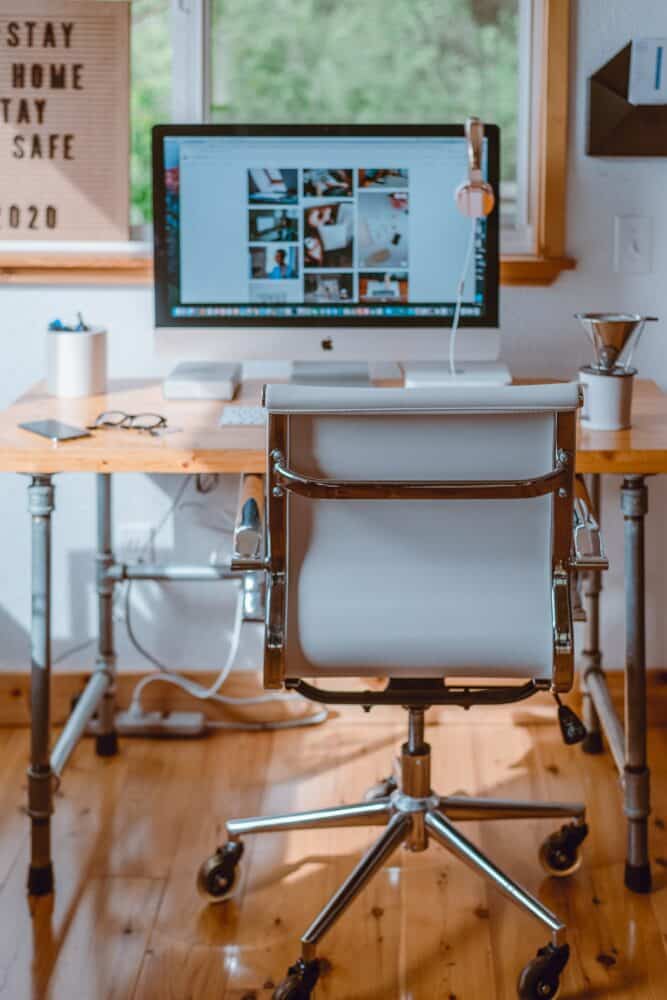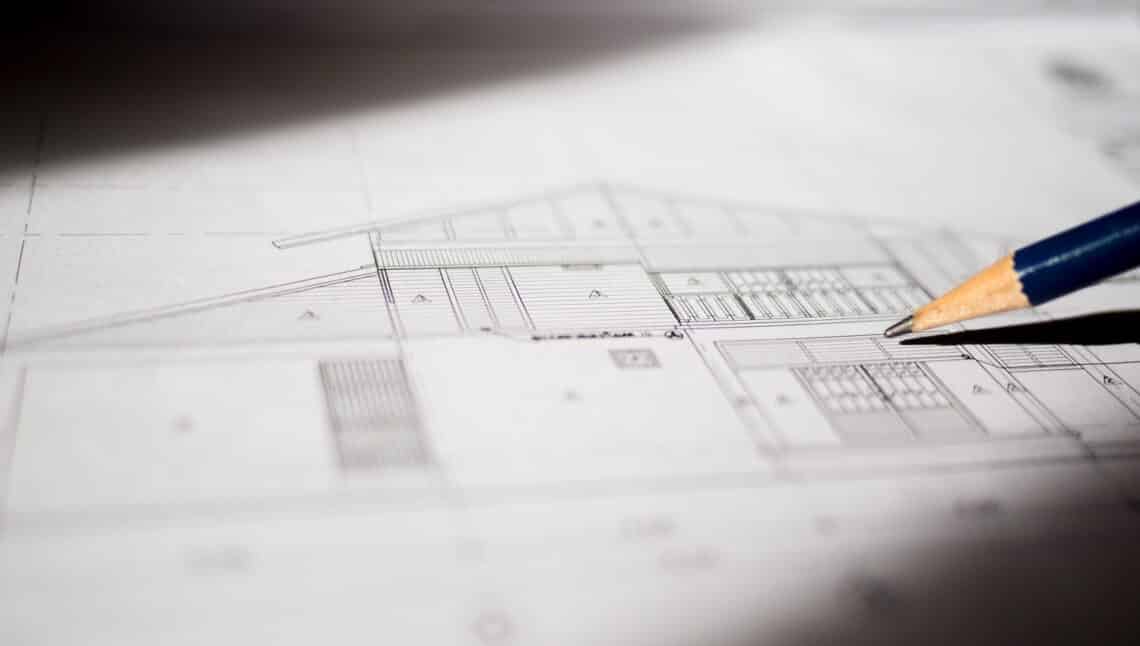As this socio-professional scenario continues to evolve despite an uncertain economic crisis, work-from-home pops up as the toast of the town.
Especially when we’re discussing the possible future of the architectural industry, remote working appears to be a hot potato. However, the U.S. Bureau of Labor Statistics implies that architects are rapidly mastering the art of scaling back on a budget since the 2008 employment cataclysm.
So, how exactly are they managing their career as remote professionals? What are its perks? Let’s plunge into the architectural industry’s modern landscape to find out whether work-from-home is working out for the architects!
Should an architect work from home?

Nothing can be quintessential, and likewise, remote professionalism has its ups and downs. If you’re wholly habituated to enjoying the corporate perks, this transition may put you in dire straits for the time being.
The comfort is comparatively less, and the work-life balance appears pretty hectic, to begin with. Moreover, the scarcity of a professional workspace and atmosphere usually takes a negative toll on the worker’s focus, as remote working comes with infinite distractions.
So, why work from home? Quite frankly, the reasons why it’s a smart alternative to the typical commercial stigmas are many. But, we’ll be mainly discussing how it allows you to be just as efficient at a fraction of its cost.
And in case you’re planning to make the change, you’re not alone. As a matter of fact, recent studies claim that about 77-78% of professional-level architects have chosen to turn frugal and consider working from home.
Let’s face it – you might not be the brightest bulb in the box if you’re still paying top dollar to manage a full-fledged commercial space in such an unpredictable economy.
Especially if it’s a small and emerging enterprise run by a skeleton crew, working from home sounds like a more logical idea. After all, it’s the age of telecommunication and the web; you have everything you’d need to break the business stereotypes that molded the 60s.
But even if we travel back in time, architecture and work-from-home were never strangers to each other. In reality, some of the pioneering designers have had a rich history of headquartering their business in their residences.
For instance, R. M. Schindler had been a hardcore home-based professional throughout his 53 years of practice. And who can forget Aalto, the modernist architectural maestro, who had created magic in the built-in studio in his house in Helsinki?

Does “home-preneurship” stunt your growth?
A global pandemic and a subsequent crisis of employment are continuously totaling the capitalist structure, one limb at a time. Amidst such a tight economic scenario, you have to act a lot smarter than continuing to follow the exorbitant corporate norms.
That’s why more and more solo practitioners and small/medium enterprises are shifting to remote working, which explains the sudden and consistent rise in the home-based entrepreneurship stats.
Working from home has stood out to be an appropriate platform for the downsized personnel to continue hustling for income. Although it was previously devalued as a mere part-time passive income source, modern times are all about working smart – and what’s more intelligent than almost 100% cost-effectiveness?
You can establish a business in your studio or garage, that too, with minimal requirements like just a device with audio/video communication apps for communicating with clients.
As we dig deeper, a Californian consultancy study reveals that home-based businesses are going head-to-head against the posh commercial workstations, in terms of growth. The competition is stronger than ever; now, a smart business strategy can outperform a gargantuan professional structure.
Data extracted from the Small Business Success Index has reflected that domestic and corporate businesses have scored the same in terms of innovation and marketing, personnel, customer service, and so on.
Speaking of data, the consultancy study reports also claim that small businesses that operate from home in the States were the source of employment for about 13.2 million Americans in 2006. In comparison, non-home-based corporate firms could only employ a workforce of 10.4 million in the same year.
So, the bottom line here is that the industrial landscape has advanced over time, and remote working doesn’t restrict one’s professional growth by any means whatsoever.
Adapting to the transition
It’s a universal fact that an average office-going employee hardly gets any quality time to bond with their friends and family. We’re mostly concerned with ensuring our financial security, and we tend to sacrifice everything else because our hands are tied.
That’s why it’s pretty hard to believe that you could secure the bag and spend ample time being around the ones you love without sacrificing your personal life. But hey, it isn’t impossible, alright!
What once was a desperate need has gradually transitioned into a lifestyle for hundreds of Americans. The architects were slowly moving towards working from home since the 2008 recession as it’s a low-investment source of income.
And most of them have happily traded the corporate lifestyle for next-level convenience and zero commutes. Instead of honking for hours in heavy traffic every morning, they are managing business in their bedroom, with a refreshing cup of coffee.
How to work from home like a pro?
Kevin DeFreitas (AIA) breaks down how remote working since ’98 has worked out miraculously from the very get-go. “Running a firm from your home results in comparatively less operating expenses, which pools in a lot of extra cash”, Kevin shares.
He also elaborates that the initial period of his architectural career involved unbelievably strong monetary security. And ever since his partnership with his spouse, working from home has brought nothing but explosive success and prosperity.
Shuffling between professional duties and parenting four children has been a lot easier due to working in their home’s comfort. He explains that spending the entire noon sending the kids to school and working in their home studio in the evening is how he maintains a proper work-life balance. “If you ask me, the level of satisfaction that I get from this lifestyle is priceless compared to any lucrative corporate position” he adds.
How to overcome hardships?
Not all that glitters is gold. Likewise, expecting work from home to be all rainbows and butterflies is sheer delusion. As Kevin talks about the downsides, the stretch of workdays stands out as a prominent issue, in general.
Also, being in sole control of the workflow can be frustrating. If you’re handling more than 3 different clients at a time, you will go bonkers. If you don’t handle any, you will go bankrupt.
However, Kevin’s approach toward remote business can be inspirational to many budding architects. He understands the importance of fair distribution of work in a successful business. That’s why he has employed 5 other architects across the U.S.
Whenever the firm is handed a large-scale project, the team takes it on without going through the hassle of employing fresh talent. Meetings are held for hours without any interruptions and without overhead expenses, all thanks to Skype.

The secret behind low fixed costs
Quite frankly, thousands of architects have clung on to home-based practices since the disastrous employment crisis that began in the early 80s, and this transition is popularly known as a “safety net.”
The industry was at its lowest, as the professionals were neck-deep in debt and loss while paying high interest. It was that moment when the strugglers of that era, such as Rick Vitullo, went the extra mile and established a home-based studio.
Luckily, taking the risk was worth every penny, as his career skyrocketed ever since. “As a matter of fact, things have been going so well that I ended up building this huge art studio in the backyard of my current residence,” he adds.
It also must feel heavenly for introverts, as many are making the best use of having a personal workspace. Higher concentration always leads to precise output, but is that all?
As obvious as it gets, the main reason why more and more architects are shifting towards home-based practices is the benefit of minimal fixed costs.
For those who aren’t familiar with what fixed costs account for in a firm – refer to the fundamental expenses of running the business. You can also see it as the expenses that remain constant throughout the fiscal year, regardless of how your company has been performing in the economy.
That said, we’ve recently come across a 2006 Small Business Administration study that brilliantly puts a contrast on the financial benefits of in-house offices. The study showed a brief comparison between the post-tax incomes between home-based firms and businesses being run in rented spaces.
Surprisingly, the home-based firms were recorded to have a 36% gross revenue share, which was 15% higher than the rented workplaces. However, home-based businesses fell short in terms of net profits.
Work-from-home and client handling
Remote or not, a business isn’t successful without a strong client base. However, when it comes to industries closely related to real estate, working from home has turned out to be a disguised blessing.
In truth, commercial spaces do not have a domestic appeal, and it becomes a lot harder to demonstrate your ideas to the ones that visit. On the other hand, architects that decorate their home offices find it easier to attract clients.
Why so? It’s because a well-built studio represents the architect’s skill set, so it doesn’t take long for the clients to understand whether this individual is right for the job.
For professionals who are into small residential projects, having your own home as a showcase can seriously impress the clients. Not only does it save you from paying thousands for overhead, but it also brings in revenue- both directly and indirectly.
Victoria Acebo shared how transforming their house into a home office has helped them garner the attention of their clients in only one visit. “This in-house setup represents us in its state as a hybrid space, and we’re glad that it has the dimensions and grace typical of this sort of architecture,” she adds.
What’s more; communication has been made so easy through several virtual platforms that you can literally have a formal meeting in your kitchen.
Taking hospitality even further
Speaking with David Salmela, FAIA was very helpful in acknowledging how some architects emphasize the need to offer a homely vibe to develop strong business relationships. “It can be a little hectic to entertain the visitors regularly,” he shares.
However, David tries to develop friendships by walking the clients through the lower level of their residence. Discussing ideas like this isn’t something you’d get in professional workspaces. An upstairs invitation for coffee further seals the deal.
Ed Binkley, AIA, shares that abandoning the corporate atmosphere has a significant drawback, which is, of course, the active synergy. It can also be pressurized at times, and Binkley has focused on making the most out of the opportunity to work under less pressure.
“Do you know the similarities between architectural designing and preparing a meal? You bring together distinctive elements to birth a perfect creation”, he shared. But wait, what’s with the out-of-the-blue chef talk?
Well, Binkley has been combining his culinary and architectural expertise to raise the bar for hospitality to impress clients. Hosting client meetings in-house is nothing new, and he even takes it further by discussing ideas with his closest clients over dinner.
Trading the pricey commercial lifestyle to develop personal relationships has been so far so good for many architects. The day isn’t far when home-based businesses become a legitimate career option for budding professionals.
Focusing on the small steps
Although we’ve learned a lot about the fixed costs that working from home has cut out for numerous professionals, let’s not forget the small yet significant savings that architects have been making by shifting from a regular corporate schedule to a home-based office life.
-
Cut down on commute charges
Seriously, how can we forget the expenses associated with daily commutes? A study claimed that the average one-way commute in the U.S. is about 26 minutes. Considering that, it’s safe to say that an average American employee spends about 90 minutes driving both ways regularly.
If you’re traveling even 15 miles every day, you’re liable to pay an average of $219 monthly, that too, without parking. Isn’t it incredible how remote jobs save you $2,628 a year? Not only does it preclude you from paying more money for gas, it also saves you enough time to balance your personal and professional lives.
-
Saving the extra meal costs
Moving on, a 2012 survey revealed that an average American employee spends above $20 a week on coffee, which accounts for about $1000 per year. Also, only 1/3rd of employees prepare their meals to cut down on secondary expenses, and the rest ends up spending around $2000 a year on food. Meals become comparatively less costly when your home is your office. Also, your caffeine expenses don’t cost an arm and a leg.
-
Lower clothing and apparel costs
Nobody can’t deny that the glamorous corporate environment is indeed costly. The continuous need to present yourself as a top-notch professional often leaves a negative impact on the wallet. The 2011 Bureau of Labor Statistics Consumer Expenditure report revealed that the average U.S. household pays about $1,750 a year on clothing and apparel. And although the transition from a posh formal suit to a simple dress sounds bizarre, it’s very pocket-friendly.
-
Zero child-care expenses
N.C-based entrepreneurial mogul Bill Hirsch, AIA, has demonstrated how working from home has helped manage parenting and profession more efficiently. Being a father of four children, childcare would have been a nightmare if he weren’t a home-based practitioner. Statistics from the 2011 National Association of Child Care Resource and Referral Agencies report revealed that the average cost of full-time care of a child stands between $4,500 to $15,000. What a save!
-
Saving Time and Money with Print-on-Demand Services
In the realm of home-based architecture, time is a precious commodity. Moving away from traditional plotter use, architects are now leveraging reliable print-on-demand services, drastically improving their efficiency. These services eliminate the need for plotter setup, management, and even calibration—freeing up architects’ time for more creative tasks, imagine how much time Anton spends a week calibrating the A1 printer plotter, the 11×17 printer, and various other printers, maybe a 3D printer or scanner?
Moreover, color accuracy—a crucial aspect of architectural designs—is maintained by calibrating the architect’s monitor with the service’s plotter. This ensures what architects see on the screen matches their prints, minimizing the need for repeated adjustments or reprints.
By outsourcing printing duties to these services, architects can reduce operational costs while maintaining high-quality standards. Consequently, as the work-from-home trend continues, architects leveraging print-on-demand services are reaping benefits in saving time and increasing productivity.
Having the best of both worlds
Although saving thousands every year being a home-based architect may sound fascinating, it might not be everybody’s cup of tea. Quite frankly, if you’re running a firm with a considerably large workforce, remote working can be a real hassle. Too many people in a room can be very suffocating, and similarly, working alone can feel a little isolating for many solo practitioners. So, can you have the best of both worlds?
Leo Smith, AIA, has spent years juggling between both worlds. Working from home part-time has been the most favorite part of his job. However, he also collaborates with other architects in his Seattle loft to avail of a spacious workstation for large-scale projects. Eugene Aleci, who had been working with six of his employees in his Lancaster home office for 24 years, shifted to a bigger workspace to be more visible to clients.
Deconstructing the home office tax myth
“It’s not rocket science” is the common phrase we use while discussing things that appear complicated but aren’t in reality. But who knows? The U.S. home office tax code might just be! However, if you’re someone who dodges home deductions to avoid triggering an audit, we have sad news. You’re failing to understand the advantage of home office deduction, which can lead to significant tax savings by using your house as a workspace.
We doubt anybody is patient enough to skim through the 35-page long instructional document, which explains why the lack of info has birthed the home office deduction myth. In reality, it’s not that hard; it comprises simple calculations, such as subtracting a specific part of your housing costs from an approximate percentage of your residence utilized for official work. You just need to keep your maintenance costs, insurance, mortgage interest, and other expense records updated.
As tax professional C. V. Monroe deconstructs the code, he adds, “What home-based entrepreneurs don’t realize is that monetary savings can be taken further by working from home, only if you’re working in sync with the protocol.” That said, let’s have an in-depth look at the fundamental points of the code that you need to be informed about.
-
When is a home deduction allowed?
As per the books, you’re only entitled to home office deductions in a case when you’re utilizing the residential space only for business purposes. To be more precise, you’d only save on taxes if the house is your central place of business and does not even have a room for family get-togethers.
If you manage an external workspace apart from your home office, you can’t enroll for home office deductions, unless you host in-house client meetings. However, it’s noteworthy to mention that you can utilize a separate building established on your property apart from your house as a workspace, only if it complies with the home office usage rules.
-
How to approach the tax code as a sole proprietor?
Things can be a little hefty when you’re in sole control of the home-based business. The only way to prepare for home office deductions is by depreciating the percentage of your residence used for official purposes. And although the subtraction isn’t considerably high, you’re liable to pay taxes on the depreciation allowable in case you’re enlisting the property on sale.
In this context, Monroe advises sole proprietors not to consume a large portion of their residence as a home office. The less area you use for commercial purposes, the less the IRS evaluation obligations come along subsequently. As a bonus, the tax impact remains at an all-time low.
-
What is the most significant tax advantage of home office deductions?
Remember how we were emphasizing on the commute as a huge advantage as a home-based business? The most significant tax benefit, in this case, is that trade-related commutes can be deducted the very instant you leave your house. You will be able to claim the mileage between the home office and the first stop, which doesn’t sound bad.
-
How to approach home office deductions as a corporation?
As a full-fledged corporation, the deductions don’t go above 2.1% of your gross income. Furthermore, the code also restricts the corporation owners from implying any depreciation on the percentage of the house that’s utilized as a workspace. However, in this case, the biggest twist is that you’re eligible to reimburse the corporate heads for the maintenance charges involved in running the home office, which wouldn’t be counted as income.

Final words
The economy isn’t stable, and it’s necessary to keep looking for smart ways to cut down on expenses and stack more chips. And if the 2008 employment crisis has done anything right, it’s putting the culture of working from home back on the map.
Fast forward 12 years, remote working is the next big thing in the U.S. architectural industry. Not only does it save tonnes of overhead expenses, but it also helps build a deeper bond with the clients.
This concludes our informational guide to how working from home is helping architects save money.
Stay tuned for more!
Related Articles


